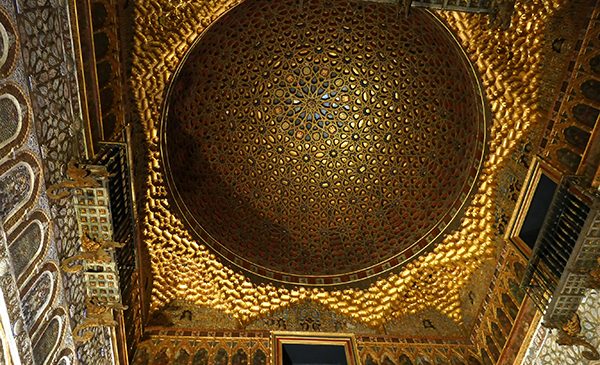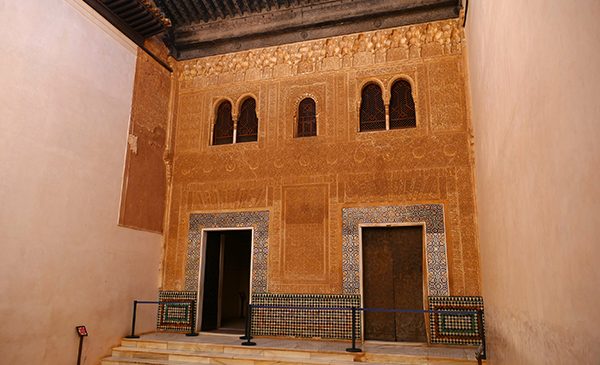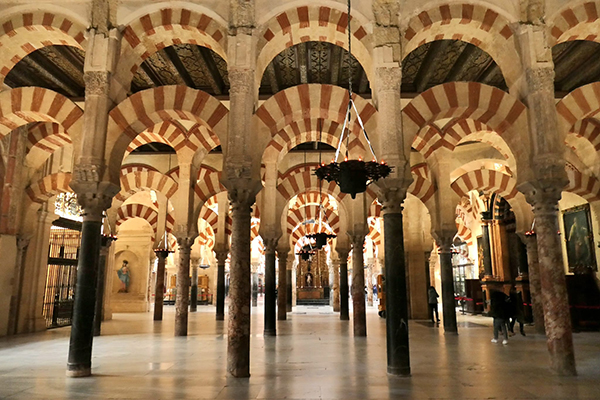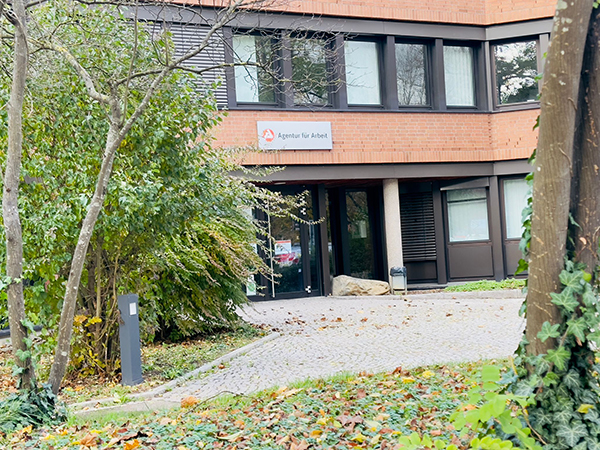By Oula Mahfouz and Michael Seifert
Tourists who visit Andalusia in southern Spain to see the architectural and artistic remains of an empire that was ruled by Islam for 800 years are amazed. They realise how much of Europe’s medieval culture is due to the inhabitants of this Muslim empire in the south of Europe. The purpose of this article is to trace important historical foundations for this and to name examples.
The Arabic name “al-Andalus” (Andalusia) refers to a historical region that existed on the Iberian Peninsula (Spain and Portugal) from the 8th to the 15th century. The exact origin of the name al-Andalus is not clear; according to one of several theories, it is believed to have originated from the Germanic tribe of the Vandals, who settled in the region before being defeated by the Visigoths.
In 711, Muslim troops from the North African hill tribe of Berbers, led by Tariq bin Ziyad, conquered much of the Iberian Peninsula from the Visigothic Christian Catholic rulers. In the following centuries, the Muslim dominion expanded further and eventually encompassed a large part of Spain and parts of Portugal. The name al-Andalus was applied to this entire territory by the Muslim conquerors. Under Abd al-Rahman I, the country came under the rule of the Islamic dynasty of the Umayyads from 755, and as emir he separated Andalusia from the Abbasid caliphate. The Umayyad rule, centred in Cordoba, lasted in Andalusia until 1031. After the collapse of this rule, small independent states known as taifas emerged. The Taifa period was marked by internal conflicts and political divisions between the various Taifa kingdoms.
In 1085, the period of rule by the Berber peoples of the Almoravids and Almohads began. At the same time, the Christian kingdom of Castile and Leon began to conquer the Andalusian territories under the heading of “Reconquista” (reconquest). In 1238, Cordoba, the most important city, fell. This left only the kingdom of Granada under the Muslim rule of the Nazarites, which experienced a final period of prosperity. Raids and wars between the Christian kingdoms and Muslim dominions alternated with periods of economic cooperation and cultural exchange and even treaties of alliance. This period ended in 1492 with the conquest of Granada by Christian troops.

The society of al-Andalus was multicultural and multi-religious. Muslims, Christians and Jews lived peacefully together for a long time and contributed to cultural diversity. In fact, Andalusia allowed considerable autonomy to religious minorities and granted them religious freedom, resulting in a rich cultural and intellectual tradition.
For centuries, the region experienced a remarkable flourishing. Muslim scholars in al-Andalus conducted extensive scientific research and promoted education and development in various fields. They translated and commented on ancient Greek and Roman works, preserved the knowledge of antiquity that was largely lost in Central Europe, and at the same time contributed to the further development of knowledge. Their contributions to philosophy, medicine, astronomy, mathematics and other disciplines had a lasting impact on Western intellectual history and formed the basis for many scientific advances of the Renaissance and the Enlightenment.
Cordoba was the cultural and scientific centre in Europe from the 9th century onwards, long before universities were founded in Central Europe. Many scholars were therefore drawn to Cordoba, which was also by far the largest city in Europe, with around 500,000 inhabitants, before Palermo. The Islamic metropolis of Cordoba had 80,000 workshops and shops, 600 public baths, 300 mosques and 50 hospitals. It was not until the 13th century that Paris developed into the largest city of the European Middle Ages.
Here are examples of developments that were initiated in al-Andalus and spread from there to central Europe:
Advanced agricultural techniques were developed that allowed for greater productivity and efficiency. The introduction of irrigation systems, new cultivation methods and the use of new plant species had an influence on agricultural practice in Europe from Andalusia.
An important contribution of the Arabs was the introduction of an advanced water supply system based on the Roman model, which piped water to the cities and public baths. They also developed new bathing utensils, soaps and perfumes to make the bathing experience more pleasant and hygienic. In addition to personal cleanliness, the Arabs also cared about public cleanliness and environmental protection. They developed an innovative system for waste disposal and contributed to the improvement of hygienic conditions in the Andalusian cities.
The inhabitants of al-Andalus developed entirely new court systems and institutional administrative systems. European administrative systems were influenced by these ideas and concepts of the Arabs. They also brought many new tools and techniques to Europe, such as the compass, the hourglass and various techniques for textile and paper production. All in all, it can be said that the quality of life for broad sections of the population and the production of luxury goods were significantly more advanced than in the rest of Europe.

The numbers from 0 to 9, which we use today in the Western decimal system, were brought to Europe by the Arabs in the 9th century. This Arabic number system, also known as the Indo-Arabic number system, then prevailed over the Roman numerals used in Europe, which were less efficient and made arithmetic more difficult. The adoption of Arabic numerals in Europe had a significant impact on the development of mathematics and the sciences as a whole. It laid the foundation for modern mathematical thinking and paved the way for important mathematical discoveries and advances in the following centuries.
One of the outstanding Muslim scholars in al-Andalus was Abu Al-Qasim Al-Zahrawi, known as Albucasis, an eminent surgeon and physician in the 10th century. His most famous work is the “Al-Tasrif”, a comprehensive medical encyclopaedia describing surgical techniques and instruments. His work had a great influence on the development of medicine and surgery.
Another prominent scholar was Abbas ibn Firnas, 9th century universal mathematician and engineer. With self-made wings, he is said to have been the first person to complete a flight and glide a considerable distance – long before Otto Lilienthal or the Wright brothers. To achieve this, the aviation pioneer had studied the flight patterns of various bird species for over twenty years. He also made advances in the field of optics, such as improving lenses and developing corrective lenses. In addition, he was an accomplished musician, poet and engineer who invented a water clock and an automatic drink dispenser.
Ibn Rushd, also known as Averroes, was a Muslim scholar in the 12th century. He interpreted and commented on the works of Aristotle and contributed to the development of an Islamic philosophy. He emphasised the compatibility of reason and religion and had an influence on the European Renaissance. Ibn Rushd was also a respected jurist and his works have had a lasting influence on various areas of education and culture.
The architecture of Andalusia is famous for its impressive historic buildings, which have been influenced by different cultures and civilisations. In particular, the Alhambra in Granada, the Mezquita in Cordoba and the Alcázar in Seville are outstanding examples of the architectural beauty and diversity in Andalusia. This architecture continues to have an impact not only on the Iberian peninsula.
The heyday of al-Andalus came to an abrupt end with the Christian conquest of Granada in 1492. Andalusian architecture, however, was preserved and not destroyed by the victorious conquerors, not only in Granada. Muslims were now pressured to convert to Christianity or leave al-Andalus. Many were forcibly expelled or enslaved, many fled to North Africa. Jews were also subjected to expulsions and persecutions and were often forced to leave al-Andalus. There was an increase in religious persecution and the public practice of Islam and Judaism was banned and mercilessly punished by the Inquisition. Mosques and synagogues were destroyed. Culturally and scientifically, an important centre was lost with the end of al-Andalus. Libraries were destroyed, books burned, scholars expelled and suppressed. Nevertheless, al-Andalus had a lasting cultural influence on Muslims and Jews, as knowledge and culture were passed on from there to other regions. But it was not until the 19th century, with the abolition of the Inquisition in Spain, that religious tolerance returned. The name Andalusia remained as a designation for the large province in the south of Spain.
tun23050205
„La Mezquita“, die Moschee von Cordoba, wurde im Stil der Umayyaden-Moschee in Damaskus erbaut. Sie wurde 785 an Stelle einer christlichen Kirche errichtet, die nach der Einnahme Cordobas von Muslimen und Christen zunächst gemeinsam genutzt wurde. Die Moschee hatte anfangs 11 Schiffe und wurde mehrfach erweitert, so dass sie seinerzeit die größte Moschee der Welt war. Sie beeindruckt durch über 850 Säulen, die wie ein Wald wirken. Nach der christlichen Eroberung von Cordoba wurde in der Mitte der Moschee ein neues Kirchenschiff für die Kathedrale geschaffen. Foto: tünews INTERNATIONAL / Michael Seifert.
002107, 002103, 002099




